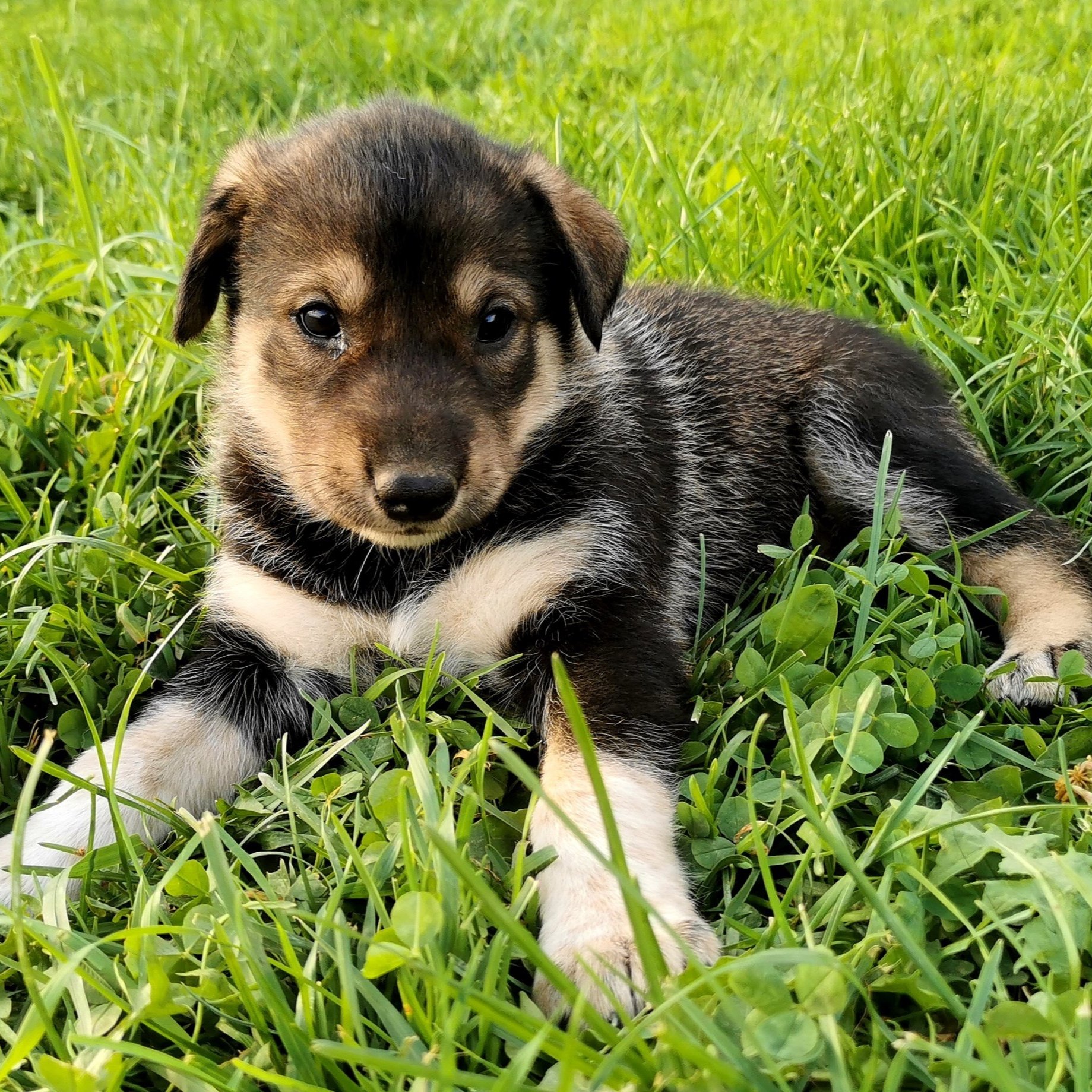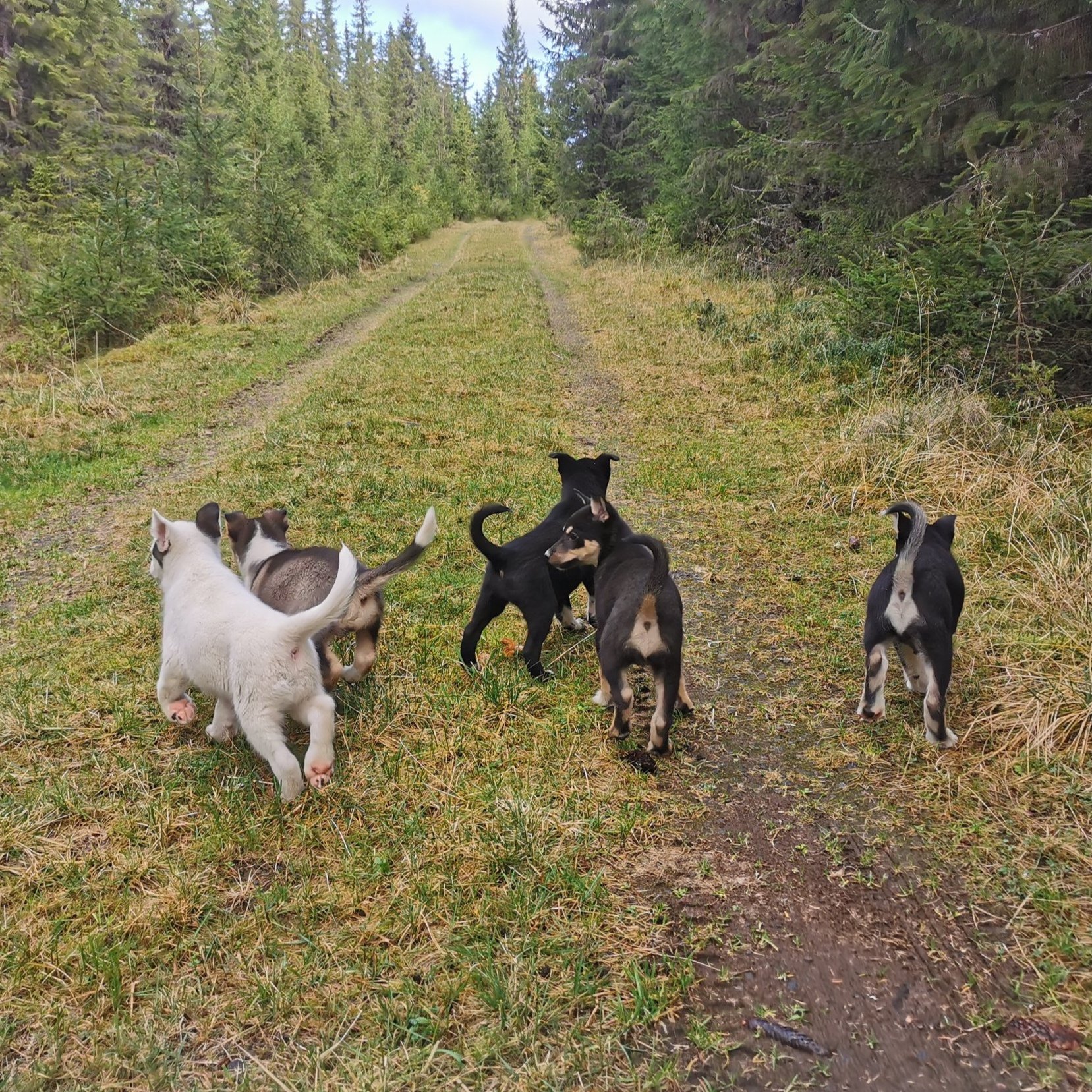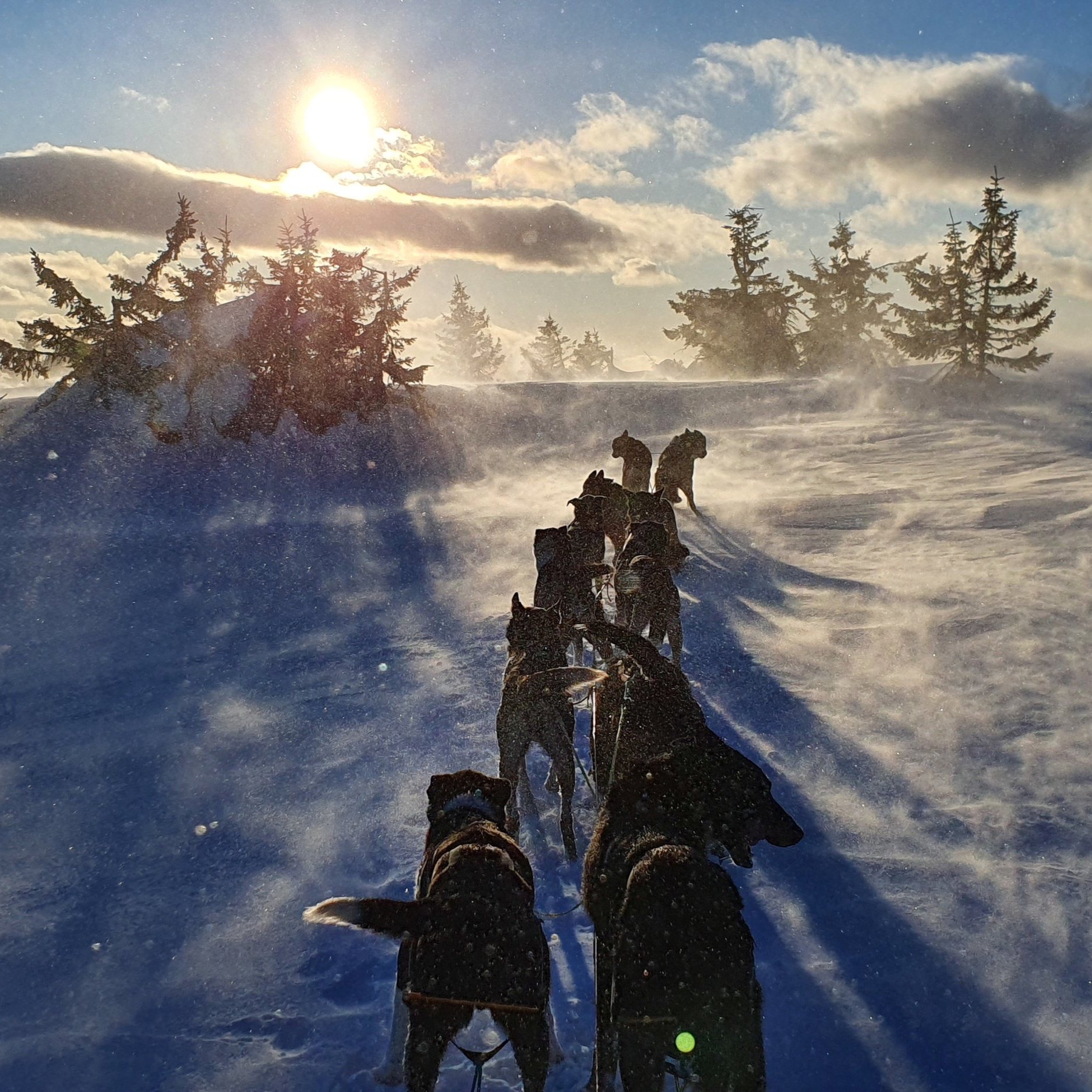Quite often our guests ask where our dogs live and how it is possible for us to take care of 120 dogs. Here is some information about our kennel including training, breeding and feeding. Questions are possible to ask and during the summer you are welcome on a kennel visit.
Unless our dogs were happy, healthy and strong they would would not pull like they love doing most of all. Even with a brother like this :)
Alaska huskies have a very strong pack instinct and are very social with each other as well as humans. Puppies can play around and with the adult ones.
There is a common question to us that makes us a bit sad. That is, - do your dogs all have a name? For us that it would be like asking a mother with children the same thing. They are all our babies and we spend all our time with them as well as our full time working team.
A musher and his sled dogs have strong bonds based on respect, harmony, leadership and love.
Sled dogs are among those dogs - or animals in general - that benefit most attention from their owners including training, best possible nutrition, fysio treatment and care. Some of them join long distance races which is exciting and motivating for a sled dog. They love working for their leader, with their team, and with lots of other dogs and people around it is like a big party for the dogs who are in fact top athletes.
Where and how do the dogs live?
Our kennel is in Åsmarka, 30mins from Lillehammer and.15 minutes from Sjusjøen. We have lost of snow in the winter and short distances to mountain areas - which is especially important in the summer when we search cold places for training.
always with the pack
Sled dogs have a strong pack instinct which means that they prefer to have other pack members around all the time - when they train, play and rest. We are also with them most of the time but when we go inside the house they still have each other. Also, when we go training with half of the pack, none of them are ever left alone.
Kennel is mostly for dogs to eat and relax together with their pack - and our handlers and us.
View from our home which is at the kennel close to the dogs.
Sometimes they are also social with each other in between sleeping and training.
January 22, less snow than normal for that time.
Home for sleeping and eating
Most of our dogs have no fence to their neighbors nor to us when we are around. Chain is 2 meters long which gives an area of 12 square meters to move on, or 17 as they move a bit longer with their body. However, their homes are for eating and sleeping mainly as they are out training/playing a lot. When they are at home they enjoy their private house to relax. Still, in between they walk around or play with their closest mates.
Some of our dogs also stay in dog yards two and two. That is convenient when females are in heat, but also some of our dogs -mostly two and two sisters - is what they prefer.
Dog yards and around houses need cleaning 1 or 2 times a day. At our kennel it is a routine in the morning always, all days in the year.
Isolated dog houses
All dogs have their own house which is important for them to rest well. Roof and floor are isolated for it to stay dry inside. From autumn and during the winter we regularly put straw in for them to sleep on, whilst during the summer they need it at cold as possible and we remove it all. We use gravel in the dog yard which is easy to keep clean, and what is most cold to sleep on in the summer.
Gravel around the house is the most chill in the summer and it is easy to keep clean.
Their own private house is important for resting properly. Houses are isolated and always dry inside.
Play time!
In between tours in front of a cart or sleds it is fun for the dogs to run loose and play. We have a nice and big area at the back of our kennel as well as the garden. In addition we go sometimes to Skaugum Hundesenter which is a lot larger and really, really nice. Usually we bring 60 dogs at the same time and stay there for 2 hours that is prebooked. The dogs love it, and it is also nice to see how close they are to us and how much they eager to go back home again after time is over.
Around the kennel there is a playground!
Frida is enjoying the nice view from the top
For adult dogs to really have a good time running loose we sometimes go to Skaugom Hundesenter at Gjøvik.
7000 square meters for fun and running
Puppies on the run
Skaugom Hundesenter, Gjøvik
KENNEL VISIT IN THE SUMMER
Warm summer days are not as fun for a husky as other days in the year as we cannot train when its too warm. Also, when we can go in the summer we always do in the evening. Therefore, in the summer it is nice for the dogs with kennel visit almost all days from 11-13. Dogs love to be cuddled and for the puppies that we let out on the grass it is excellent for their socialization.
Warm kennel for restitution
Last year we fixed a room at the kennel with cages for dogs to spend the night inside for restitution after long distance training and cold weather. Also in case of injured dogs it will be good and last winter we filled it up on New Years Eve with dogs that we know are not happy for fireworks outside. The dogs really enjoy sleeping here and they always drink better inside for some reason.
Sometimes we also have dogs in our house if one needs extra attention. Puppies are also welcome in the house a few times as a part of their life education.
Racing dogs enjoy spending the night here after long distance training.
First time inside our house is always exciting for the little ones.
Healthy breeding and happy puppy lives
Our breeding is for our own use mainly, but it happens also that we have some of them for sale if it turns out more than we need. Puppies are never planned for sale.
Qualities for males and females
When planning litters we look at the qualities of the individual males and females as well as the possible combinations. Those qualities are mainly;
How they behave within the pack as well as with other dogs
How much they enjoy working/pulling
How they run/pull - technique
How well they cooperate with us as leaders
Quality on paws, teeth, fur
Size of the dog and propotions
In other words, colors on fur and eyes, ears up or down etc are never an issue on our breeding.
Puppy LIfe
The
What and how often do they eat?
Our dogs are partly eating high quality dog food that we buy. In addition, we produce our own dog food with left overs from a local slaughterhouse. It happens also that we slaughter animals that cannot be used as food for humans. Raw meat with some extra vitamins and oil is perfect dog food.
Bones are good for teeth, also for golden retrievers living at a husky kennel like our Solo does.
During winter season dogs are given a soup that is dog food, water and a bit of oil to make sure they have enough liquid. On touring days or days with training they also have a piece of meat in the middle of the day. Finally, in the evening we feed their main meal which amount is adjusted to each dog. Our boss, Leif Tore is the one taking care of the main meal always as he knows them all and what they need.
During the summer one meal is enough as the dogs are less active. Fresh water 24hrs is important in the summer/autumn until the frozen degrees are here.
Work and training
Summer
Guests very often ask us how much we train our dogs, is it every day? Answer is it depends on a lot of things. First, in the summer it is very much depended on the temperature. We cannot go if its too warm. During the summer we train as much as possible and that is usually not as much as we would like to. In addition, we go to a place that dogs can run loose for them to move and have a good time.
Autumn
From September we can usually go training regularly. Now it is time to start preparing the dogs for the winter season. All dogs have their training plan according to their age and capacity. From 1st of September our handler team is also here and they need time to get to know the dogs, each and one of them, before the season starts.
Winter
Snow is here usually by November and from 1st of December our winter season has normally started. Training during winter season depends on the amounts of guests. Usually training is not necessary and the most important is enough days off and time for them to rest. However it is nice for the dogs in between to go in largers teams and longer distances than they do with tourists.
Our racing team of dogs, the ones that will join Team Sjusjøen Husky in Gausdal Maraton, Femundløpet and Finmarksløpet have their own plan for training and resting. They join the tourist business usually on 30km tours only as part of their training program.
What happens when they reach a certain age?
Alaska husky is a type of dog with strong health and quite likely they will reach an age of 14. We think that in their final years they will have a better life as family dogs somewhere instead of staying with us and slowly work less. Sleeping on the coach, nice easy walks or pulling the new owner on skies. Usually we let dogs retire already at the age of 8, for the new owners to have the dog for hopefully many years.
LACk of Motivaton
Sometimes we experience some lack of motivation for pulling - at any age. Then the first thing we do is to check his or her health more properly than we normally do. Possible muscle pain somewhere, tooth problem, heat etc are among things that could explain it.
If nothing occurs as an obvious reason we try another position in the team, a new partner, give the dog some extra time off and perhaps a different type of tour for a change. If nothing seem to help the dog is just ready for a new life as a family dog.
Luckily, we do have people asking for adult dogs regularly. If you are in that position that you would consider taking over a sled dog, please ask and you will be invited on a visit. A retired dog from a big kennel like ours is normally about the most easy and friendly dog that you can get. Also, although they will need time to adjust a life outside the pack an Alaska Husky will quite easily be connected to a new owner.
Iben and Shirin turned out as a perfect match for both of them. Iben is born here and was a happy sled dog until the age of 5.
Now Iben is still pulling Shirin on skies or running as well as just hiking tours and in between a good life on the coach with her new life partner.






























